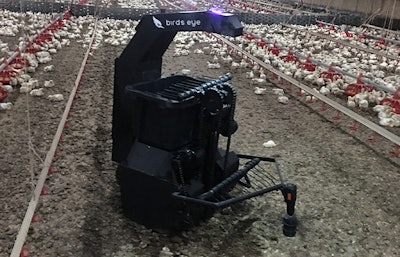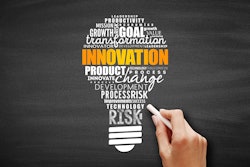
Robotic technology can be used to pick up deceased birds in poultry houses, freeing up workers to perform other, less repetitive tasks.
“The poultry industry wants this technology so badly. Labor is impossible to come by,” said Scott Niewohner, Founder & CEO, Birds Eye Robotics. “There’s virtually no one that wants to put on muck boots, stare at the floor and pick up dead birds.”
The poultry industry – along with many other jobs that require repetitive manual labor – had already been moving toward automation prior to the pandemic. The COVID-19 pandemic accelerated that trend.
Early prototypes to modern robot
Two years ago, Niewohner, with the help of his high school aged son, created the first prototype of the mortality recovery robot using an old electric wheelchair, a microprocessor, a webcam and some sensors they had lying around the house.
“I grew up on a farm,” Scott Niewohner, explained, “but what I loved most about the farming opportunities was building and fixing and creating. Back then, we used duct tape and baling wire, but now we’re using technology.”
The early prototype has evolved into a more sophisticated model.
“We found that when we tried building this robot one of our problems was traction. There’s manure on the floor and our wheels would get caked up and we would get stuck, so we built some custom spiked wheels that were self-cleaning. But in doing so, we found that we are turning the bedding,” he explained. “Now, a major benefit of our robot is that we’re aerating the bedding.”
Neural networks and computer vision
The latest model uses sensors that combine into a neural network, a form of machine learning that helps a computer learn a task. They have also used computer vision to train the robot to recognize whether a bird is deceased and needs to be retrieved.
The robot is designed to perform a recovery sequence four times a day, taking a different route through the poultry house each time. Once a sequence is completed, the robot returns to its charging station to power up.
“It’s a fully autonomous computer vision sensor fusion robot,” Niewohner said.
Like what you just read? Sign up now for free to receive the Poultry Future Newsletter.


















